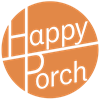How We Make Decisions That Work For Us
We're a self-managed team over here at HappyPorch. We didn't have a violent overthrow of our corporate overlords, that's just how we've always been from the very beginning. Being a self-managed team means that we all have a say in the company's direction. Decisions don't come down from on high; they're something that any team member can raise, discuss, and reach a consensus.
So how does this work? How can we make decisions that involve the whole team without getting stuck fighting over tiny details? Well, like most of the ways we self-manage ourselves, we have a process for that.
Our Decision Making Process
No matter what issue we're deciding, all decision making follows the same core principle. Anyone can make any decision, as long as they have the whole company's best interests at heart and follow the guidelines. These guidelines are a framework that helps us categorise the decision we're making and determine which decision making model fits best.
Consent Decision Making
For team-level decisions, we don't try to reach a full agreement. Instead, we aim to reach a consensus that everyone can live with. That means, even if we didn't completely agree with the proposal, we all agree to respect and adhere to the decisions we make as a team. We like to emphasise the word "consent" because we want to remember that we're checking for no objections. Every person gives their consent. The objectives of consent decision making are:
- Collaboration
- Cooperation
- Fairness
- Inclusion
- Participation
Consent Vs Agreement
You might be wondering why we don't attempt to reach a 100% agreement. This process can often harm team relationships by allowing factions to develop and compete against each other. And it takes a long time.
By including and respecting everyone's input while generating as much agreement as possible, consent decision making turns those negative dynamics on its head. Working on reaching consensus rather than full agreement results in better decisions, better implementation, and better team relationships.
Our Decision Making Action Steps
Appoint a facilitator and a note taker
These roles help ensure that the decision making process runs smoothly and with good documentation. Facilitators are responsible for keeping track of time, ensuring that everyone sticks to the discussion rules, and can suggest alternative techniques if the discussion gets stuck. The note taker is responsible for documenting the group's decisions, conversation, and any action points.
Agree on a time boundary
The time boundary needs to allow enough time for everyone to understand and react to the proposal. Deadline length partly depends on the "importance" of the decision. Small decisions don't need as much time as big ones.
Get Advice
Our advice process makes possible our core principle of any person being able to make any decisions. Before making a decision, the decision-maker asks for the perspective and advice of other team members who are knowledgeable or experienced in the relevant area. The proposer is the person who noticed or is most affected by the problem. There's no obligation to follow the advice, but it helps to make the best decision possible.
Make a proposal
After listening to and learning from their colleagues' advice, the proposer puts forward a proposal on Slack. It needs to include all the necessary information but be clear enough for everyone to understand easily. Include a clear deadline for clarifying questions.
Clarifying round
During this time, team members have an opportunity to ask clarifying questions to improve their understanding. The clarifying round isn't the time to offer reactions or objections (that comes next!)
Quick reactions
Everyone gets a chance to say their reactions to the proposal as they see fit. And that's all that happens at this stage; no discussions or responses from the proposer.
Test for consent
The facilitator asks everyone if they can see any reason why adopting the proposal would cause harm or move us backwards. The note taker documents any stated objections without discussion.
Improve the proposal
The proposer reviews everyone's concerns and objections and works on adapting the original proposal to address them. Sometimes, this can take some creative thinking! The proposer is free not to address an objection, but they would need to state their reasons why.
Once the proposer presents their new version of the proposal, the facilitator starts another round of testing for consent.
Vote
We use Slack Polls to vote (as a remote team, we love async options!) Our voting options are:
- 👍 Yes, I consent
- 👊 Abstain, I'm not sure, though not blocking
- 👎 I have objections, but not blocking
- 🚫 Block
Anyone can block any decision if they think it would be harmful or goes against our core values. The team will respect the block, and the proposer will work to understand the underlying concerns. We assume that team members will have the confidence to use the block when genuinely concerned and treat this power in an adult, responsible way.
Using the Decision Making Process in Real Life
The beauty of this process is that it allows for a lot of freedom and flexibility. The proposer can determine the significance of their proposal and adapt the process and deadlines to fit. Decisions that only affect team members working on a specific project don't need to include the rest of the company. Small, quick decisions can occur entirely on Slack, while more significant ones might need a team call. A big decision might need more time for reflection between each step, whereas a smaller decision can move more quickly.
The decision making process supports our self management journey by empowering everyone to participate and giving us the flexibility and freedom to adapt it for each situation. This is one of the ways we're upholding our values and ensuring that HappyPorch exists for us.

